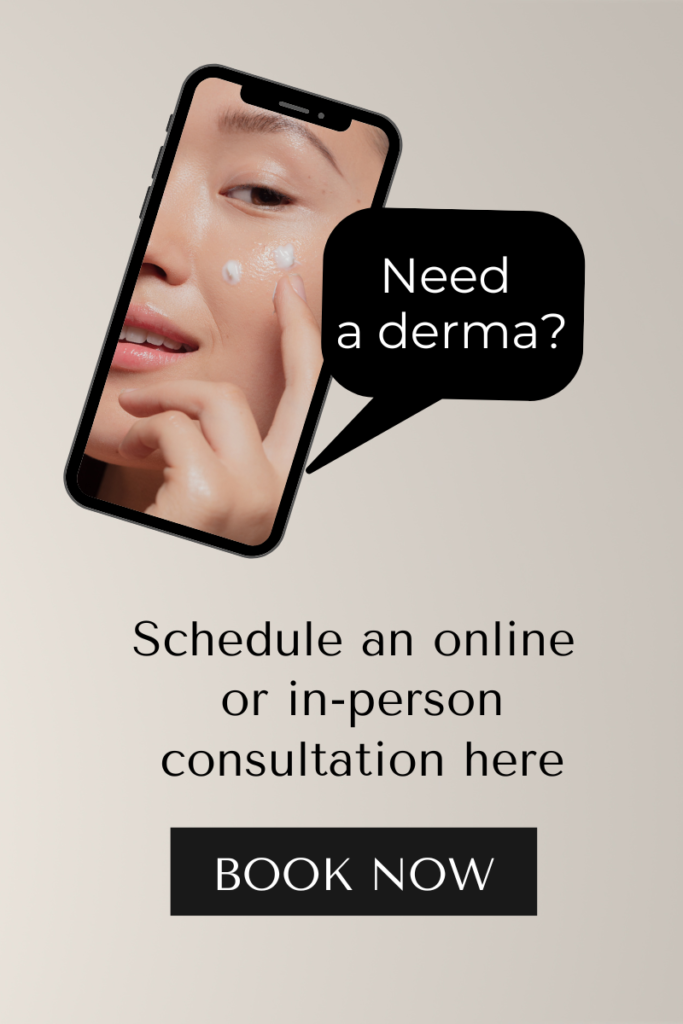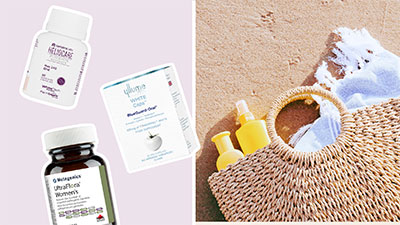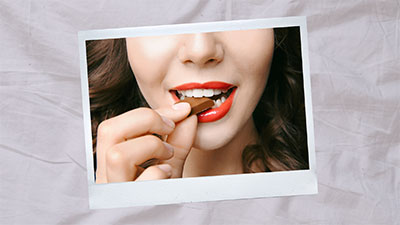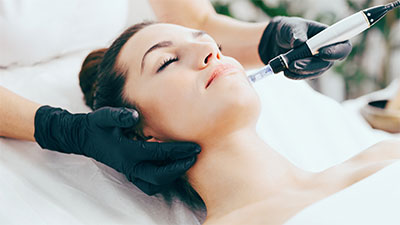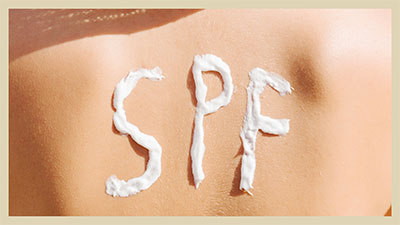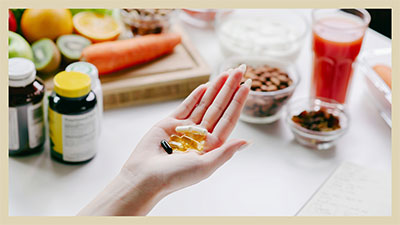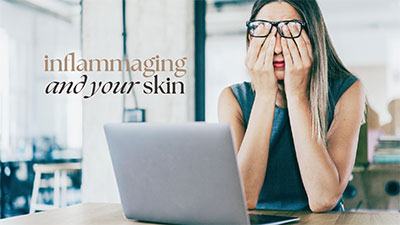Here’s What You Need To Know About HEV Light (And How To Stay Protected)
FYI: It comes from the sun and your gadgets.

Time and time again, we’ve been told how damaging sun exposure can be, and how sunscreen is an absolute must—even on a cloudy day. But heads up! Aside from UVA and UVB rays, there’s another silent skin enemy that we’re exposed to daily yet is not talked about nearly enough: high-energy visible (HEV) light. Also known as blue light, its primary source is the sun but it can also come from your phone, your laptop, television screen, and even fluorescent bulbs. That said, it’s something that we’re exposed to day in and day out, even when indoors and at nighttime. (Check out the best indoor sunscreens here.)
HEV light and your skin
Whereas UVA and UVB light fall under the category of invisible light, HEV light, as the name suggests, is visible to the human eye. It falls under the blue/violet band of the sun spectrum (hence, the term blue light) and possesses a particularly high energy level. Moreover, as a growing amount of research shows, HEV light can be destructive for skin.
Quick science review: UVB light is known for causing sunburn, while UVA light causes the signs of aging, like wrinkles, uneven skin tone, and loss of firmness. This is because UVA has longer wavelengths than UVB, which allows it to penetrate deeper into the dermis.
HEV light is similar to UVA in a sense that it can penetrate into the lower layers of skin and can cause skin to age prematurely. It generates free radicals, which damage the skin by breaking down collagen and elastin, making you more prone to premature wrinkles and sagging. Plus, it also causes hyperpigmentation or an uneven skin tone with visible dark spots and blemishes.
How can I protect myself?
While most modern sunscreens are formulated to protect against both UVA and UVB rays (also known as broad-spectrum sunscreens), not all of them are capable of filtering HEV light. To ensure you’re shielded against the damaging effects of blue light, look for a product that’s packed with antioxidants that work to defend skin from free radicals, minimizing your risk for damage.
Physical or mineral sunscreens with zinc oxide or titanium dioxide have also been found to provide protection against blue light as it scatters visible light, filtering it so it doesn’t really get through to your skin. “For maximum protection, proper application of sunscreen is important,” says Dr. Maximin Navarro, Bella Pelle Philippines’ resident dermatologist and a Philippine Dermatological Society (PDS) fellow. “Apply sunscreen at least 30 minutes before going out.”
And then there are sunscreens that use Fernblock® technology, specifically the ones from Heliocare, which features an exclusive Polypodium Leucotomos Extract that acts on all four types of radiation: UVB, UVA, HEV light and IR or infrared radiation, a.k.a. energy from heat. Its power is derived from a tropical fern known for its amazing skin-caring properties and natural defense mechanism against the sun.
Here’s a quick round-up of sunscreen products that offer HEV light protection—which you should add to your routine right now:
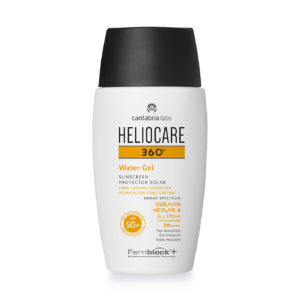
Heliocare 360 Water Gel, P1,850
This super light and hydrating photo-protector is quickly absorbed by the skin for a fresh, non-sticky finish.
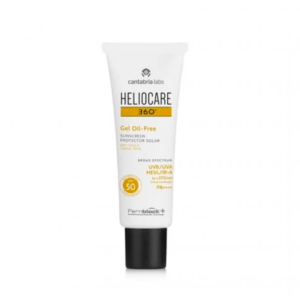
Heliocare 360 Gel Oil-free SPF 50, P1,600
No need to worry about greasiness or heaviness with this non-tinted gel that’s perfect for those with oily or combination skin.

Heliocare 360 Mineral Tolerance Fluid, P1,850
This breathable fluid absorbs quickly into skin and dries completely clear, making it a popular choice for men.
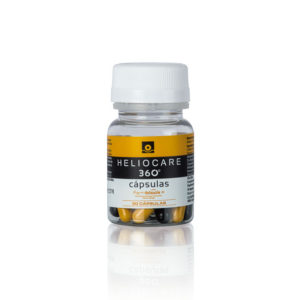
Heliocare 360 Capsules, P2,150
Designed to complement your topical sunscreen, this oral supplement improves photo-protection from within so you can reap maximum benefits.
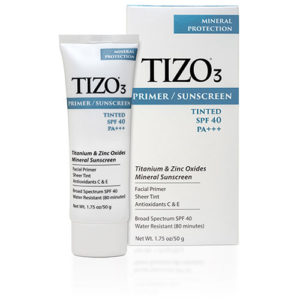
Tizo 3, P1,980
This bestselling mineral sunscreen has titanium and zinc oxides to protect against UVA, UVB, and HEV light, and antioxidants to aid in skin repair.
HEV is not all bad, though
All things considered, it’s also worth noting that some exposure to HEV light can be good for us, especially if it’s from the sun. “HEV light is not completely harmful,” says Dr. Navarro, citing benefits such as “regulating the body’s circadian rhythm when subjected to exposure during the day, boosting alertness, improving memory and cognitive function, and elevating one’s mood.” He adds, “The key to living safely with HEV light exposure is to find a healthy balance and to protect the skin from unnecessary exposure.” Here are more tips to keep safe:
- Consume antioxidant-rich food, such as fruits and vegetables, and use topical antioxidants. Try the Cosmetic Skin Solutions Supreme Serum CE, P3,700, which features a blend of Vitamin C, E, Asiatic Acid and Glutathione for powerful photo-protection.
- Wear sunglasses with a UV rating when heading out on a sunny day, as the skin around the eyes and the eyes themselves are particularly vulnerable to blue light damage.
- Wear blue light-protecting glasses if you’re in front of screens most of the time.
- Install blue light covers on your phone, your tablets, and computer screens.
- Reduce the brightness of your devices and enable “night mode” to switch to yellow light and minimize blue light emission.
For customized skin care recommendations, you can book a virtual dermatological consultation with Dr. Navarro, Bella Pelle Philippines’ resident dermatologist and a Philippine Dermatological Society (PDS) fellow, here.
For more beauty and skincare tips, subscribe to our newsletter:
SHOP OTHER PRODUCTS:
 Heliocare 360 Mineral SPF 50, P1,550 |
 Heliocare Gel SPF 90, P2,450 |
 Heliocare Ultra Capsules, P2,390 |
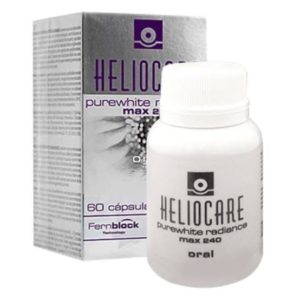 Heliocare Pure White Radiance Max 240, P4,500 |
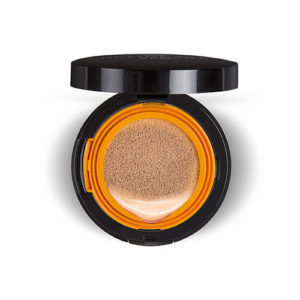 Heliocare 360 Color Cushion Compact, P1,950 |
RELATED READS:
- Here’s Your Complete (And Easy) Guide To Sun Protection
- Do Oral Sunscreens Work? Here’s What You Should Know
- The 5 Best Sunscreens to Use Indoors


